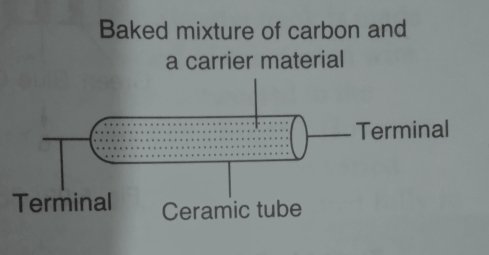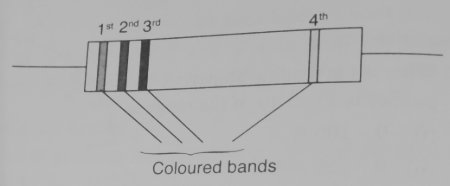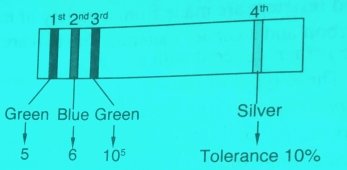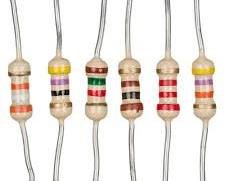Resistors are materials that offers resistance to the flow of an electric current. Resistors are usually categorized into two:
- fixed resistors
- variable resistors
Fixed resistors
These are resistor whose resistance is almost constant. Resistors are commonly made from mixture of carbon and carrier material where the two are mixed and baked together. The baked mixture is then covered with a ceramic tube. That is reason fixed resistors are commonly referred to as carbon resistors.

Carbon fixed resistors are usually light and have varying resistance values. Fixed Carbon resistors are widely used in electric circuits like radio receivers and computer mother boards.
color coding of carbon resistors
Color coding is used to determine resistance value of each given resistor. The value of the resistance for carbon resistors is indicated by use of four color bans around the ceramic tube. Each color indicates a given value.

By use of color codes, the value of its resistance can be determined together with it’s torelance value. Each of the color band represents a certain digit. The color bands and the value they represent are indicated in the table below.
| Color | Black | Brown | Red | Orange | Yellow | Green | Blue | Violet | Grey | White |
| Value | 0 | 1 | 2 | 3 | 4 | 5 | 6 | 7 | 8 | 9 |
The value of the resistance is given in the form of ab x 10n. The first band gives the first digit, second band the second digit and the last band the power of 10.
The torelance value indicates to which accuracy can the resistance of the resistor be measured. The table below shows the colors used to indicate torelance value as a percentage of its resistance value.
| color | Red | Gold | Silver | No color |
| ± % | 2 | 5 | 10 | 20 |
consider the resistor shown below:

From the table green represents 5, blue represents 6 and green power of 5 to base 10. It has the tolerance value of 10% as indicated by the silver band.
The value of the resistance for the above resistor is thus 56 x 105 Ω


Leave a Reply